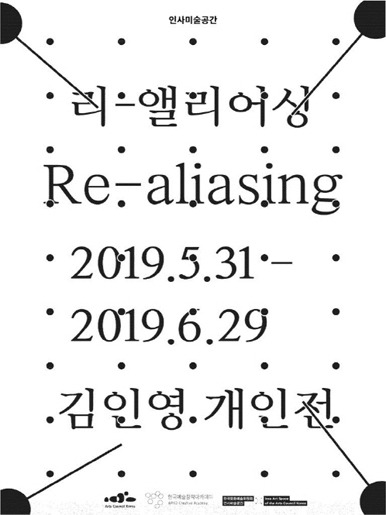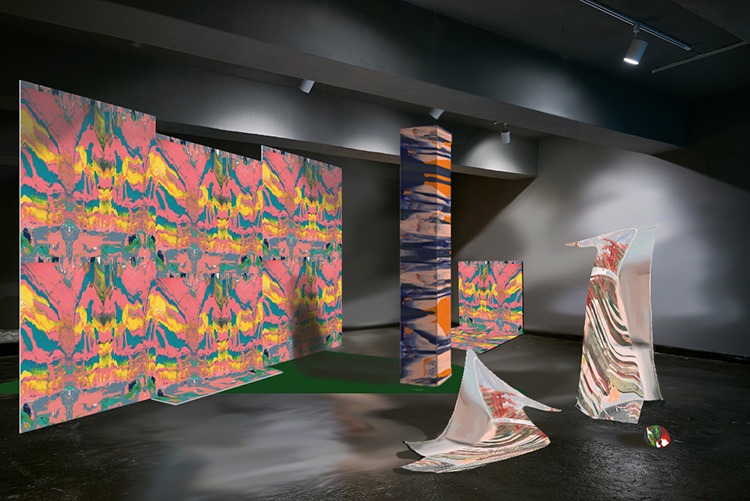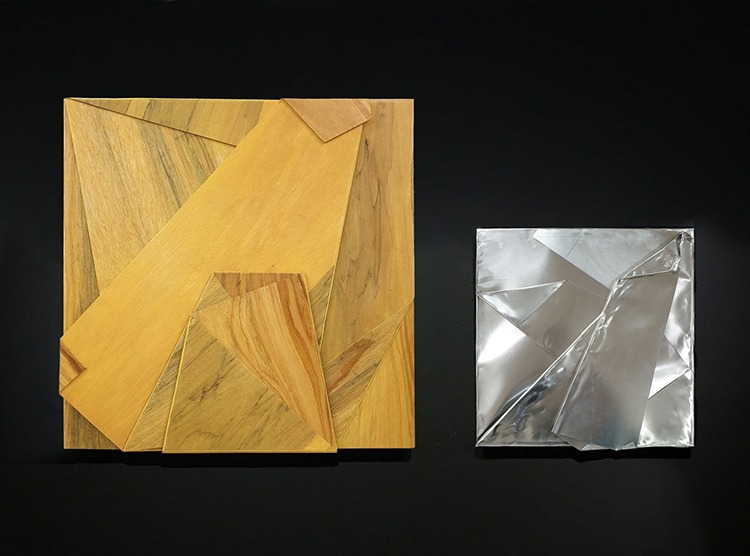
| Period| | 2019.05.31 - 2019.06.29 |
|---|---|
| Operating hours| | 11:00am - 07:00pm |
| Space| | Insa Art Space |
| Address| | 89, Changdeokgung-gil, Jongno-gu, Seoul, Republic of Korea |
| Closed| | Sun. Mon. |
| Price| | Free |
| Phone| | 02-760-4722 |
| Web site| | 홈페이지 바로가기 |
| Artist| |
김주옥
|
정보수정요청



|
|
Exhibition Information




"Re-aliasing" is a personal exhibition by Kim In-young, which deals with various visual expressions such as installation and floor plan of an image displayed in a digital environment. Digitizing a subject is the conversion of the various differences that exist in the existence of the real world into a binary technology, a computable state. Through this transformation, we see digitized images through liquid crystal screens on a flat surface, when the real world's martiers, weight and size disappear and only skin-like images such as thin membranes remain. The writer, who used to use painting as the main medium, experiences the distorted or lost nature of his work in the process of digitizing his work. An award mediated through digital media has a natural limitation that inevitably results in the reproduction of pixels. Because of this, diagonal, curved, rounded and semicolored things reveal their limits in a limited resolution environment and have a stile-shaped bumpy outline, which is called "aliasing." This aliasing technique is called anti-aliasing by mixing colors around uneven boundaries to create a middle area to mitigate visual effects. The greatest feature the author feels about images reaching him through digital media, "bacterial smoothness," can be attributed to this anti-aliasing process. Digital images that remove the materiality of raw materials and wear anti-aliased smooth membranes have new properties that function in itself, but we overlook the substance as the material that digital media has, the author says. As digital media is routinely used, images continue to grow into another reality. In order to try to awaken to this part, the author executes "re-materialization," which intercepts images that are anti-aliased and reach us in the middle and extracts only the features. This can be seen as a way to reverse the reverse of what is meant to make the images visible on the digital media natural without a sense of perversion, and to revive the materiality removed. The author calls the process Li-Alliasing and describes it as a restoration to a bumpy stomachache. However, rather than restoring the state of anti-aliasing to the state before being anti-aliased, the author intends to bring out the unique characteristics of digital images such as aliasing into the real world in a different way and implement them as new materials. The author has used a technique called "scanography" as a way for Lee-Alliasing. Scanograpy is a method of work that intentionally causes deformation and distortion during scanning process. The author wanted to make a nodule to the naturalness created by digital media by intervening in unpredictable properties in the precise mechanical process system of digital media. These nodules break the immersion in the target and work to be conscious of the medium. Therefore, various Li-aliasing methods, including Scanograpy, are featured in the exhibition. First of all, the first floor to come to the entrance of the exhibition hall and face each other is a space of "smooth membranes." The author recognizes the smooth screen of liquid crystal as a boundary separating the digital world from the real world. A "smooth screen" is a physical characteristic of an image that a writer sees through a window while looking into the digital world. In order to bring this "smooth" characteristic into the real world and implement it visually, the author uses a manual warrior technique. A transcription technology is a technology that activates a digitally produced film with a chemical reaction of water and a special solution to apply it to objects. The author's intention to intervene in variables that will cause a sense of crisis in the process continues in this technique. Since the final process of filming objects by immersing them into water is done by number of tasks, the transcription phase can involve an element of improvisation. In response, the author manipulates the film images by showing the boundaries of the film inside the acrylic plate that is being transferred, or by stirring the film on top of the water to disrupt its shape. The surface, on the other hand, is expressed in a uniformly smooth texture, which is the key reason why the author chose a hand warrior. Even multiple layers of images are intended to reproduce the sensation of being squeezed into a layer of thin film. The author creates a volume by bending, folding, or crushing the handmade plate to give the "smooth membrane a sense of material substance. These three-dimensional objects are another way of Li-Alliasing, which shakes a sense of thin, flat digital images. In the exhibition on the basement and the second floor, the work continues to replace the attributes that the author has felt in computer graphic work with real space. The author tries to represent layers of digital images that can be detached and duplicated as layers of physical space. The author noted the eight empty boundaries in the two-story structure of the personnel art space consisting of three rooms and eight doors. The non-existent but recognizable boundary has an image of a space that looks backward, and the images of the boundary are replicated and installed with blinds in the same location on the first basement floor. As can be seen in the cross-sectional view of the postcard, empty areas on the second floor, or invisible boundaries, are implemented in the basement to become material. The work of <Three Rooms, Eight Boundaries>, which interlocks the spatial structure and puzzles on the second floor and allows us to infer the connection between the basement levels, creates a sense of as if the reproduction and transfer of space occurred. Located in various areas of the second floor space, is a job that is done to copy/paste the actual space. The spatial images of the second floor on which these works are displayed are copied again, and appear on the blinds in the basement, causing an image transformation as if it were proliferating. In this way, the author creates confusion about what is digital processing and what is real and experiences confusion of perception. In addition, the artist will show her work on the issue of resizing in the digital environment on the route from the first floor to the second floor. On the corner wall entering the first-floor stairway, a regular square output of 1080x1080pixels and 9.14x9.14cm is displayed. This is the result of images uploaded on the "Instagram" to the real world in line with the output environment. Then, when you go upstairs, you find the original object work of the image. The 1:1 regular angle proportionality, a condition demanded by Instagram, is an object that is proportional to the quality of materials such as wood and aluminum, not cut and removed, but folded or crumpled. This is to quantitatively visualize things that are cut and removed in the process of processing and editing digital images, and to revive the material feeling of loss. Such a consistent effort by the author is seen as an act of producing the differences again, as opposed to erasing them in the process of digitalization. This is the desire to find a difference in a homogeneous world that is mediated by digital media, and another expression of anxiety about how we become too easily immersed in a media environment where the boundaries of the digital and real worlds are blurred and blurred. If what we see can lack substance, there is no reason why we can't make an invisible entity visible. It is hoped that Kim In-young's instant work in responding to the new media environment could awaken a tactile sense that may be beyond the limits of digital images and further lead to reasons for non-visual areas of "more than what is seen." ■ Kim Joo-ok
